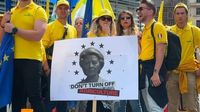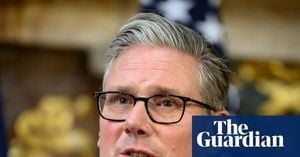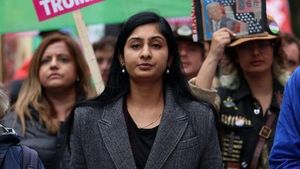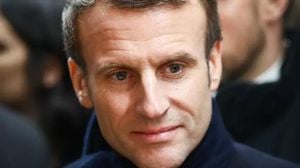The European Union stands at a critical crossroads as it embarks on a complex and contentious journey to finalize its largest-ever budget proposal, a sweeping €2 trillion plan unveiled by European Commission President Ursula von der Leyen in mid-July 2025. Set to govern the bloc’s finances from 2028 to 2034, this ambitious Multiannual Financial Framework (MFF) has already ignited fierce debates among member states, policymakers, farmers, and environmental advocates alike, highlighting deep divisions over priorities, spending levels, and governance.
At the heart of the dispute is the sheer scale of the proposed budget, which marks a significant increase from previous long-term frameworks. The plan calls for raising the budget from 1.13% to 1.26% of the EU’s Gross National Income (GNI), a move that has met with resistance from fiscally conservative countries such as Austria, Finland, Sweden, and the Netherlands. Finland’s Minister for European Affairs, Joakim Strand, was among the first to voice concerns, labeling the budget level as "too high" and demanding cuts. Similarly, Austria’s Claudia Plakolm criticized the proposal as "very, very far" from what her country could support, emphasizing the need for careful and wise use of taxpayers’ money.
Denmark, holding the rotating presidency of the EU Council, has taken on the role of mediator, with Minister Marie Bjerre acknowledging the difficulty ahead: "No country is ready to accept the budget as it is today," she said after the initial ministerial meeting in Brussels on July 18. Yet, she stressed the importance of the budget for Europe's future, noting, "We need a stronger Europe. We need to be more ambitious, and I think that is something we can agree on." Denmark plans to finalize a "nego-box" by the end of the year to guide negotiations over the next two years.
The budget’s funding mechanism also represents a point of contention. Von der Leyen’s proposal suggests expanding the EU’s "own resources"—essentially EU-wide taxes—by introducing levies on electronic waste, tobacco products, and companies with annual turnovers exceeding €100 million. These would complement existing sources such as the Emissions Trading System (ETS) and the Carbon Border Adjustment Mechanism (CBAM). Brussels anticipates raising more than €58 billion annually through these measures, aiming to cover COVID-era debt repayments without burdening member states further or cutting key programs.
However, opposition remains fierce. Nordic countries, including Sweden and Finland, have rejected new taxes outright, with Sweden’s Jessica Rosencrantz bluntly stating, "We do not see the need for new own resources or new common borrowing. There is no such thing as a free lunch." Germany, too, has firmly opposed issuing new common debt, with Chancellor Friedrich Merz urging the EU to "do more with the money it has" and rejecting the proposed company levy during a London visit. The prospect of a €400 billion crisis tool backed by joint borrowing has further fueled resistance among fiscal hawks.
Despite these challenges, European Commissioner for Budget Piotr Serafin defended the proposal, emphasizing that an "ambitious own resources package" is essential to meet new priorities without increasing member state contributions. He acknowledged that discussions are in the "very early stages" and require extensive technical work before political negotiations intensify.
Beyond the headline budget figures, the proposal signals a dramatic reshaping of the EU’s spending priorities, particularly concerning agriculture and cohesion policy. The Common Agricultural Policy (CAP), historically a dominant pillar of EU spending, faces substantial cuts and restructuring. The Commission plans to merge agricultural subsidies and regional development funds into a single mega-fund of €865 billion. Within this, the CAP is "ringfenced" at €300 billion, primarily for income support to farmers, but this represents a significant nominal and real-term reduction compared to the current 2021–2027 budget, where CAP spending was €386.6 billion.
Experts estimate that, when adjusted for inflation, the new proposal amounts to a 20% to 30% cut in real agricultural spending. This shift reflects a long-term trend: CAP’s share of the EU budget has dropped from over 70% in the 1980s to just 16.5% in the new plan. The Commission argues that synergies with other policy areas may help offset direct cuts, but many farmers and their representatives remain unconvinced.
Indeed, the farmers’ lobby Copa-Cogeca condemned the proposal as a "declaration of war," accusing the Commission of "concealed budget cuts" and "complete renationalisation" disguised as administrative simplification. A symbolic protest dubbed "European Agriculture’s Black Wednesday" underscored the sector’s frustration. Meanwhile, MEP Herbert Dorfmann criticized the plan in the European Parliament, stating, "You’re doubling the MFF, but we’re getting a 25% cut to the CAP. Don’t try and sell that to us as a success story." The Commission has introduced measures to soften the blow, including an inflation adjustment mechanism and transition payments of up to €200,000 for farms adopting ambitious transformation plans.
Cohesion policy, aimed at reducing regional disparities, also faces upheaval. The new budget proposes merging cohesion funds with other areas such as agriculture, rural development, migration, and border control into the single mega-fund. This consolidation, intended to simplify administration, has sparked fears of fierce competition among regions and sectors for funding.
Kata Tüttő, President of the European Committee of the Regions, warned that this approach could turn cohesion policy into a "Hunger Games," pitting farmers against city mayors and agricultural support seekers against those needing unemployment assistance. While the Commission promises a minimum allocation of €218 billion for less developed regions and €450 billion for regional development, fisheries, and rural areas, critics worry about the erosion of local control and the risk of centralization. Tüttő lamented, "We will be kicked out from the design, the management and the creation parts of the policy. We will just become implementers, fighting for money." Raffaele Fitto, Executive Vice-President for cohesion, acknowledged that the proposal is a starting point requiring further refinement and emphasized the need for budget flexibility to meet evolving challenges.
Environmental and climate ambitions are woven through the budget, with the Commission pledging a broad 35% spending target on climate and environment. However, critics argue that this target masks a dilution of concrete commitments, particularly for nature and sustainable farming. Explicit EU-level funding for greener agriculture has been removed, and the previously ringfenced one-third of the CAP budget dedicated to climate-friendly farming has been scrapped, leaving decisions largely to member states.
Environmental advocates fear this will lead to inconsistent policies influenced by powerful agricultural lobbies. The LIFE Programme, the EU’s sole fund exclusively dedicated to nature, climate, and environment, faces potential discontinuation, jeopardizing efforts to implement the Nature Restoration Law and meet global biodiversity funding pledges. Ester Asin, Director of the WWF European Policy Office, warned that the 35% climate target risks becoming a "PR exercise" without robust tracking and transparency. Greenpeace’s Marco Contiero echoed concerns, emphasizing that "farmers need a common approach to make European farming more resilient and more fair, not a patchwork that stagnates the status quo and rewards rich polluters."
With just over two years left to finalize the budget, the stakes are high. Member states must reach unanimous agreement in the Council, following European Parliament consent, to adopt the MFF and its accompanying revenue system. The political battle is only just beginning, with deep ideological divides over fiscal responsibility, strategic priorities, environmental commitments, and the future shape of European solidarity. As the EU grapples with competing demands—from bolstering defense and competitiveness to safeguarding farmers and vulnerable regions—the outcome will shape the bloc’s trajectory for years to come.






